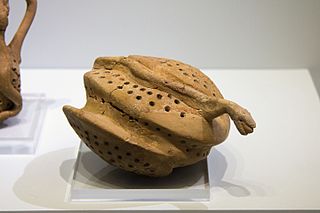Ariadne's Tribe: Minoan Spirituality for the Modern World
Walk the sacred labyrinth with Ariadne, the Minotaur, the Great Mothers, Dionysus, and the rest of the Minoan family of deities. Ariadne's Tribe is an independent spiritual tradition that brings the deities of the ancient Minoans alive in the modern world. We're a revivalist tradition, not a reconstructionist one. We rely heavily on shared gnosis and the practical realities of Paganism in the modern world. Ariadne's thread reaches across the millennia to connect us with the divine. Will you follow where it leads?
Find out all about Ariadne's Tribe at ariadnestribe.com. We're an inclusive, welcoming tradition, open to all who share our love for the Minoan deities and respect for our fellow human beings.
Ariadne's Tribe Pantheon: The Serpent Mother
This is one in a series about finding our deities in Minoan art. Find the list of the full series here.
The Snake Goddess is perhaps the most iconic representative of Minoan culture and religion. Show a person a Snake Goddess figurine, and it's a pretty sure bet they'll think of the Minoans. But did you know that there are only a handful of these figurines, and no other representations of the Snake Goddess in the frescoes or the seals?
The two pieces in the photo up top are the most recognizable of the Snake Goddess figurines. Found broken and with some parts missing in the Temple Repositories at Knossos, they have been reconstructed to give us some idea of what they might have looked like originally (there is contention as to the accuracy of the reconstruction, but they're what we have, so we'll go with it for now). In order to avoid confusion as to which of these figurines we're talking about, we've taken to referring to the one on the right as "Snake Goddess No. 1" because she's the most well-known and the one most often found in Minoan-themed artwork. The other one, then, is "Snake Goddess No. 2" (not throwing shade, she's just less well-known).
Whether you connect the Serpent Mother with the Grain Mother (the snakes kill the rodents that eat the grain), with Ariadne, or with Ourania, you can also find her in the form of terracotta bell jar figurines, so called because of the shape of the "skirt" part of the figurine - there's no evidence they were ever used as actual bells. So, for instance, we have this lovely example from Gortys:

Image CC BY 4.0 via Wikimedia Commons
Like Snake Goddess No. 1, she has her hands in the "upraised arms" position and is holding snakes. If you look closely, you can also see that her headdress is covered in snakes. There's another, similar bell jar figurine, also from Gortys, who has the snake-y headdress but isn't holding any in her hands - that may be her hand on the left side of the photo above.
We also have the head of another figurine from Gortys, probably a bell jar style statue like the one above:

Image CC BY 4.0 via Wikimedia Commons
Like the bell jar figurine above, this one has snakes all around her headdress, but she also has a protrusion in the center of her forehead that looks almost like an Egyptian uraeus. Also, her headdress includes a shape that we think represents one of Crete's sacred mountain peaks - several other bell jar figurines have similar "pointy bits" on their headdresses. Perhaps that's telling us that the Snake Goddess was revered at one of the peak sanctuaries or was associated with a particular mountain on Crete.
In addition to the few human-style figurines, we can also find the Serpent Mother in some interesting perforated vessels that have snakes on them. For instance, there's this one from Chania, with snakes wriggling around the top and down onto the spout:

Image CC BY 4.0 via Wikimedia Commons
And this one from Knossos:

Image CC BY 4.0 via Wikimedia Commons
And this one, also from Knossos:

Image CC BY 4.0 via Wikimedia Commons
The current theory is that these vessels were used in rain-making ceremonies, with water pouring through the holes as a gesture of sympathetic magic. If that's the case, we can count the rain among the many blessings the Serpent Mother brings.
So, even though we don't have nearly as many images of the Serpent Mother in Minoan art as we do some of the other deities, she's there if we look hard enough. Which one is your favorite representation of her?
Comments
-
Please login first in order for you to submit comments




















